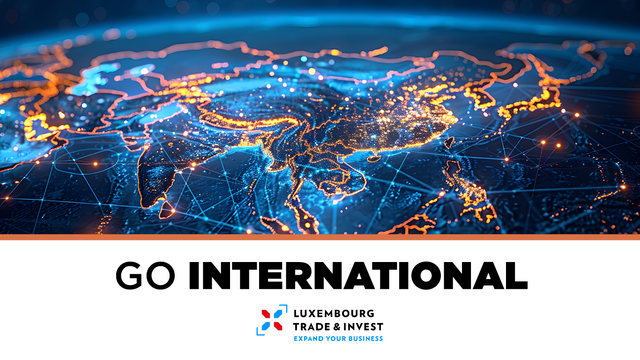
Chapitres
The Philippines has been one of the most dynamic economies in the East Asia and Pacific region. Its economic dynamism reflects increasing urbanization, a large and young population, and strong consumer demand, supported by a vibrant labor market and robust remittances, which have raised the incomes of the most vulnerable. The private sector remains buoyant, with a rapidly expanding services sector, including business process outsourcing, wholesale and retail trade, and tourism.
Source: World Bank
Indicateurs clés
- Surface
- 300,000 km2
- Population
- 117,164,094 (2025)
- Type de gouvernement
- presidential republic
- Langues
- Filipino (official; based on Tagalog) and English (official); eight major dialects - Tagalog, Cebuano, Ilocano, Hiligaynon or Ilonggo, Bicol, Waray, Pampango, and Pangasinan
- PIB
- 494.16 billion (2025)
- Taux de croissance
- 5.4% (2025)
- HDI
- 107
- Capitale
- Manila
Indicateurs macroéconomiques
Growth is likely to remain robust in the Philippines and be among the fastest in the region despite global slowdown and increased trade policy uncertainty, thanks to strong domestic demand, underpinned by stable inflation and monetary policy easing; sustained public investment, despite ongoing fiscal consolidation; and the effects of recent investment policy reforms, which could boost private investment. Over the medium and long term, the government is committed to making large investments in both human and physical capital to boost inclusive growth. Sustainably financing its inclusive growth ambitions and achieving the medium-term fiscal targets will require accelerating revenue mobilization efforts, however. Recently passed tax policy reforms that broadened the tax base will contribute to a marginal increase in tax revenues in 2025.
Source: The CIA World Factbook - Economic overview Philippines
IMF Statistics:
| Subject descriptor | 2023 | 2024 | 2025 | 2026 | 2027 |
|---|---|---|---|---|---|
|
All Items, Consumer price index (CPI), Period average, percent change Percent (Units) |
5.978 |
3.213 |
1.608 |
2.55 |
2.842 |
|
Current account balance (credit less debit), Percent of GDP Percent (Units) |
-2.834 |
-3.956 |
-3.81 |
-3.509 |
-3.204 |
|
Current account balance (credit less debit), US dollar US dollar (Billions) |
-12.387 |
-18.262 |
-18.825 |
-18.738 |
-18.564 |
|
Exports of goods and services, Volume, Free on board (FOB), Percent change Percent (Units) |
6.817 |
6.154 |
4.979 |
4.156 |
6.615 |
|
Gross domestic product (GDP), Constant prices, Percent change Percent (Units) |
5.519 |
5.692 |
5.435 |
5.731 |
5.993 |
|
Gross domestic product (GDP), Current prices, Per capita, US dollar US dollar (Units) |
3905.419 |
4078.977 |
4320.557 |
4619.101 |
4959.693 |
|
Gross domestic product (GDP), Current prices, US dollar US dollar (Billions) |
437.055 |
461.617 |
494.158 |
533.922 |
579.389 |
|
Imports of goods and services, Volume, Cost insurance freight (CIF), Percent change Percent (Units) |
0.156 |
6.98 |
3.041 |
2.978 |
6.776 |
|
Unemployment rate |
4.358 |
3.808 |
3.867 |
3.867 |
3.767 |
Source: World Bank
Le Luxembourg et le pays
Existing conventions and agreements
Non double taxation agreement
In order to promote international economic and financial relations in the interest of the Grand Duchy of Luxembourg, the Luxembourg government negotiates bilateral agreements for the avoidance of double taxation and prevent fiscal evasion with respect to Taxes on Income and on fortune with third countries.
None
Air Services agreement
- Agreement from 21.11.2001
Informations supplémentaires
Contact points in Philippines
Embassy of the Grand Duchy of Luxembourg in Philippines
Ambassador with residence in Tokyo: H.E. Mr. Michel LEESCH
Luxembourg House 1F
8-9 Chiyoda-Ku Yonbancho
Tokyo 102-0081
Japan
Tel.: (+81) 3 3265-9621
Fax: (+81) 3 3265-9624
E-Mail: tokyo.amb@mae.etat.lu
Honorary Consuls
Competent post for consular affairs by the Embassy of the Kingdom of Belgium in Manila
Honorary Consul with Jurisdiction over the Philippines:
Mr Lutz KUNACK
308 Mango Drive
Ayala Alabang Village
Muntinlupa City
1780
Philippines
Tel.: (+63) 2 617 0019
E-Mail : manille@consul-hon.lu
Source: Ministry of Foreign Affairs of Luxembourg



